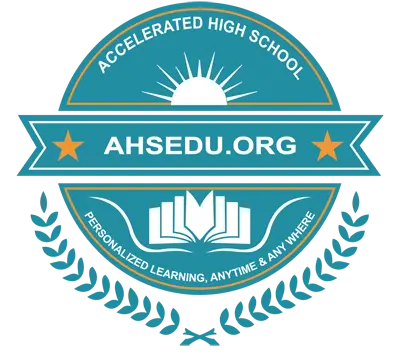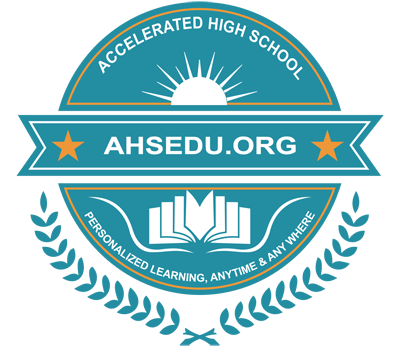
General Science-V
General Science for Grade 5 on AHSEdu.org explores advanced topics like matter, energy, and ecosystems, enhancing scientific inquiry. It encourages independent learning through engaging activities.
Course Topic
A1_ States of Matter
A1_Technology in Everyday Life
A2_ Changes in States of Matter
A2_Genetically Modified Food
A3_Heating, cooling, and changes of state
A3_Differentiate Between Mass and Weight
A4_ Predict Heat Flow
B1_ Physical Changes
B2_ Chemical Changes
B3_ Identify Reactants and Products
B4_ Identify Elements, Compounds and Mixtures
C1_ Forms of Energy
C2_ Energy Conservation
D1: Ball & Stick Models of Molecules
D2_ Interpret ball-and-stick models
D3_ DIY Model of Ball and Stick Structure
D4_ Count atoms in chemical formulas
D5_ Count Number of Bonds in the Chemical Formula
D6_ Identify Shape of the molecule
E1_Directions of Forces
E2_Balanced and Unbalanced Forces Affecting Motion
E3_Mass Affecting Force and Acceleration
E4_Altitudes and Wavelengths of Waves
F1_Attraction and Repulsion of Magnets
F2_Strengths of Magnetic Forces
G1_Waves
G2_Frequency and Amplitude
G3_Reflection and Refraction
G4_How Sound and Light Travel
H1_Five Kingdom System
H2_Classification and Characteristics of Plants
H3_Classification and Characteristics of Animals.
H4_Vertebrates and Invertebrates
H5_Classification of Vertebrates
H6_Use Evidence To Classify Vertebrates
I1_Parts of Plants
I2_Fruits and Vegetables as Plant Parts
I3_How do Plants make Food?
I4_Flower Parts and Their Functions
I5_Flowering Plant and Conifer Life Cycle
I6_Moss and Fern Life Cycle
I7_Photosynthetic Organisms
I8_Monocot and Dicot Plants
I9_Types of Pollination
I10_Sexual Reproduction in Plants
I11_Asexual Reproduction in Plants
I12_Structure of Seed
J1_Animal Life Cycle
J2_Human Organs and Their Functions
J3_Circulation and Respiration
J4_Digestion
J5_Removing Waste
J6_Perception and Motion
K1_Microorganisms
K2_Role of Microorganisms
K3_Advantages and Disadvantages of Microorganisms
K4_Preventing the Infections
K4_Diseases Caused by Microorganisms
K5_Spread of Infectious Diseases and Transmission to Humans
L1_Environmental Pollution and Its Types
L2_Effects of Pollution
L3_Preventive Measures To Reduce Pollution
L4_Biodegradable and Non-Biodegradable Materials
M1_Understanding Genes and DNA
M2_Inheritance of Traits
M3_Genetic Variation and Diversity
M4_What Affects Traits?
M5_Match Offspring To Parents
M6_Inherited and Acquired Traits
M7_Inherited and Acquired Traits: Use Evidence To Support
M8_Plant Pedigree Chart
M9_Animal Pedigree Chart
N1_Cells
N2_Tissues
N3_Functions of Plant Cell Parts
N4_Functions of Animal Cell Parts
N5_Plant Cell Diagram
N6_Animal Cell Diagram
N7_Plant Cell Vs Animal Cell
O1_Ecosystems
O2_Role of Living Organisms In Ecosystem
O3_How does Matter Move in Foodchain
O4_Food Web
O5_Classification of Invertebrates
O6_Biodiversity
O7_Conservation of Biodiversity
O8_Human Impact on Biodiversity
O9_Harmful Effects of Decomposition
O10_Biodegradable and Non-biodegradable Materials
O11_Greenhouse Effect
P1_How Can a Community Protect Sea Turtles?
P2_Natural Energy Sources
Q1_Rocks and Minerals
Q2_Erosion
Q3_How do Sedimentary Rocks Form?
Q4_Igneous, Sedimentary and Metamorphic Rocks
Q5_How do Rock Layers Form?
Q6_Rock Cycle Diagram
R1_Fossils
R2_Identify and Classify Fossils
R3_Compare Fossils To Modern Organisms
R4_Compare Ancient and Modern Organisms
R5_Evidence From Fossils in Rock Layers
S1_Earth's Land Features Using Photographs
S2_Earth's Land Features Using Satellite Images
S3_Water on Earth
T1_Shadows
T2_Earth’s Rotation and Orbit
T3_Day and Night
T4_Brightness of Sun and Other Stars
T5_Constellations and the Changing Night Sky
T6_Phases of Moon
T7_Solar Eclipses
T8_Seasons
T9_Constellations
U1_Multiple Design Solutions To Prevent Flooding
U2_Best Design Solution to Prevent Hurricane Damage
V1_Laboratory Tools
V2_Principles While Working in a Laboratory
V3_First Aid
W1_Nervous System
W2_Mascular System
W3_Food and Diet
X1_Physical Properties of Metals
Y1_Luminous and Non-Luminous Objects
Y2_Harmful Effects of Noise on Human Health
Y3_Open and Closed Circuits
Z1_Soil and Its Characteristics
Z2_Types of Soil
Z3_Space Exploration
Z4_The Role of NASA
Z5_Satellites







